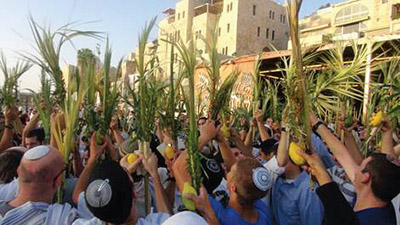
This past fall, as happens every year, a number of our friends traveled to Israel for Sukkot. While I found myself asking them, almost reflexively, whether they would observe one or two days of Yom Tov, I could have answered my own question: the answer was, of course, “one day.”
It was a given… and then it occurred to me: something has changed!
It is now common practice among American Modern Orthodox families to keep one day of Yom Tov when visiting Israel. However, as recently as 20-30 years ago, this practice was not nearly as accepted. Further, it appears that the vast majority of “gap-year” yeshiva students only observe one day while in Israel. Certainly, in 1989 when I spent my own gap year in yeshiva, observance of one day was not the default assumption among foreign students.
What makes this change fascinating is that it appears to have occurred in a gradual, grass-roots manner. There are halachic opinions (upon which I am not remotely qualified to comment) on both sides of the “visitor one day-two day debate,” so what has changed is not necessarily halachic support for either choice so much as individual, and perhaps social, comfort zones.
Before I speculate as to a reason for this evolution, a brief historic review is helpful.
The second day of Yom Tov was instituted by the Sanhedrin (rabbinic leadership) during the Second Temple-period, in the second or third century BCE. At that time, many Jews lived outside of Israel, having opted to remain in exile following construction of the Second Temple. The start of each month, and hence the holiday calendar, relied upon sighting of the new moon, which was ratified by the Sanhedrin. However, due to the distance from Jerusalem to the Diaspora, communication was often delayed, so the Sanhedrin instituted “the second day” for those living outside Israel, with the objective that one of the two days would certainly be accurate.
In the fourth century CE, in anticipation of the disbanding of the Sanhedrin by Roman oppression, Hillel II established the basis of our modern calendar, which permanently fixed the correct days of Yom Tov. Thereafter, notwithstanding the calendar’s precision, Diaspora Jews—then a majority of the population—continued to observe two days as had been their custom for centuries, while Jews in Israel continued to observe one day.
So, back to the original question: why a recent change in practice among visitors to Israel? I suggest that the answer lies at the confluence of two phenomenon: one old and one new.
The old phenomenon could be labeled “the kvetch.” The second day of Yom Tov occupies an unusual status among many observant Jews. It has long been common fare for people to openly ask “why do we still need two days” in a way that is unheard of concerning other halachot. The complaining is unique in this regard.
The new phenomenon is the striking change in demographics of Torah Judaism. As recently as the 1930s, over 98 percent of world Jewry lived in the Diaspora. The custom of virtually all Jews was to keep two days; simply put, this was our only frame of reference. Fast forward to the 21st century: in the blink of a historic eye, not only do roughly half of all Jews now live in Israel, but astoundingly, no less than 67 percent to 75 percent of observant Jews reside in Israel (with the range depending upon pollster defined vagaries of “traditional”). Stated differently, the “two-dayers” have quickly become a significant minority for the first time since the second Beit Hamikdash stood.
What could be labeled a third paradigm has recently begun. The first paradigm, which lasted 1,600 years from “Kabbalat HaTorah” at Sinai until the fourth century CE, entailed the Sanhedrin (and for a period, the Jewish leadership preceding the Sanhedrin) establishing Yom Tov. During this period, all Jews relied upon real-time rabbinic direction to establish Yom Tov, and for most of this era, nearly all kept one day, with a fluctuating Diaspora population keeping two days. During the second paradigm, conveniently 1,600 years as well, from the fourth century until the mid-20th century, all Jews relied on the calendar yet an overwhelming majority kept two days. A third paradigm has started during our lifetimes in which all Jews rely on the calendar while an overwhelming majority now observe one day.
Perhaps this demographic paradigm shift has subconsciously made it more comfortable for American tourists in Israel to now keep just one day, in that by doing so they are joining the practice of most Jews. It is in a sense a way to put the kvetch to rest, and what better way to do so than to be “oleh l’regel” with a trip to Israel!
By Ephi (Robert) Eisenberg
Ephi (Robert) Eisenberg is an Executive Managing Director at Cushman & Wakefield and lives in Livingston. He can be contacted at: [email protected].










